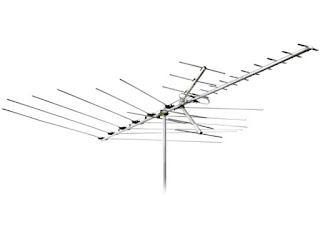Why did you simply replace cable with a live streaming service? What was it about cable you didn't like? The price? Okay, I get that. If the live streaming service is cheaper, that's great.
Or was it paying for channels you didn't watch? Well, if that's the case, does the live streaming service have channels you don't watch? I bet it does. So what did you solve? Price? So we're back to that, which is fine, but I'm trying to understand why you actually cut the cord. The real reason.
Is it more control of your viewing options? That's legit. There is nothing wrong with wanting to control your TV, rather than ceding that to the cable company. With cable, you probably have only one or two cable options. With streaming, you have many options, including those listed above. You can switch easily, with month to month service, unlike cable where you are often locked into long term contracts.
My reason was price, and it's still true that I'm saving money vs paying for cable. But I don't have a live streaming service year-round. I'll subscribe to one during part of the year, usually for a total of four months, though not four back-to-back months. I'll let time pass between them. And I'm wondering if you should do that too.
Do this little thought experiment. Suppose you didn't have a live streaming service. Everything you have for streaming is there, just not the live streaming service. Would you be okay with that? Now, perhaps your first reaction is "no." But is that really your final answer. Let's go through this and see.
If you did not have a live streaming service, would you just not watch TV? I suspect you would find something to watch. Likely, you have other services, such as Netflix, Disney+, Discovery+, Prime Video, Paramount+, HBO Max, Apple TV+, Peacock, or one (or more) of the many many other services. If you have one or more of those services, you can find stuff to watch.
Of course, while you can watch something, you wouldn't be able to watch everything you want, losing the control you may be after. So is it a bad idea to drop live streaming? Well, for you, it may be. But it is something to consider.
If you only subscribed for a few months out of the year, how big of a problem would that be? If you subscribed every other month, would that be a problem? If you could catch up on the missed shows, would the savings in money, cutting the live streaming costs in half, be worth it? What about if you subscribed one month a quarter? Or four months a year, spread out in some manner? Would the savings make the delay in watching some shows worth it?
You can't do this with cable. If you are on a month to month billing with cable, after your long-term contract is up, and you drop cable, they'll sometimes have a reconnect fee. Or they may require a long-term contract to go back. Streaming services don't require that, and you can subscribe and drop as often as you like.
I'm really not trying to talk you out of a live steaming service, but I am trying to get you to put some thought into ways to save money. You have options streaming that you don't have with cable. If utilizing these options saves you some money, then you're ahead of the game. Heck, you're not just ahead, you've won.
If you put a little thought into your Streaming Life, you may end up putting some money in your wallet. That's a good thing.










